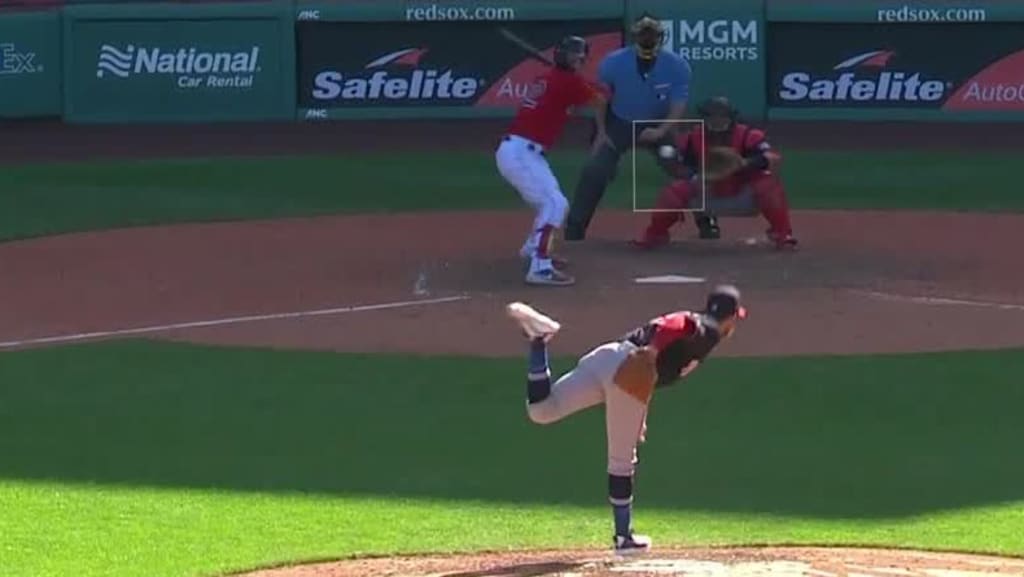
What Sean Doolittle was thinking wasn’t translating to how he was throwing. He knew he had to make changes when his velocity wasn’t reaching the heights it had in the past. He also knew he had to improve his ERA, which had ballooned to 15.00.
But how?
“There have been several times through this process where I kind of was feeling like I was slamming my head against a wall,” Doolittle said on Saturday. “I was trying so hard. I was working really hard, but I wasn’t getting any results.”
The Nationals placed the 33-year-old left-handed reliever on the injured list on Aug. 13, retroactive to Aug. 11, with right knee fatigue. He went to their alternate training site in Fredericksburg, Va., to reset.
“There were some dark times, man. I’m not going to lie,” Doolittle said. “I was searching. I didn’t have a lot of answers. I had a lot of ideas of things that I was trying to fix. Ideas about adjustments I needed to make. But then my body wasn’t cooperating, and certainly not on the time that I wanted it to.
“A lot of doubt starts to creep in and stuff that has been second nature for my whole career -- eight, nine years -- all of a sudden are things I have to think about for the first time in a long time.”
Doolittle had to learn how to trust his body again. That meant less over-correcting and more doing what had led him to success as a late-inning reliever. Doolittle was activated from the IL on Wednesday and appeared in his first game since Aug. 10 when he pitched against the Red Sox on Sunday at Fenway Park in the Nationals' 9-5 loss. He allowed two hits -- including a misplayed popup to second base -- and no runs facing four batters in two-thirds of an inning out of the bullpen.
“I thought he threw the ball well,” manager Dave Martinez said. “His velo was still down, but he was at 91 [mph]. He’s a fly-ball pitcher, and that’s what he did. … He threw at the top of the zone when he needed too, which was kind of nice. He threw a nice slider there at the end. If he can do that, we’re going to use him.”
Over his career, Doolittle has relied on his fastball. At its peak, it averaged 95.4 mph in 2016, and it never tracked less than 93.3 mph for a season. This year, though, his velocity dropped to 90.6 mph. Of his 10 pitches thrown on Sunday, nine were fastballs, which maxed exactly at that 90.6 mph average.
“Early in my outing today, I tried to kind of reach back for one and it let go,” Doolittle said on Sunday. “I looked back at the scoreboard and it was 89 [mph]. I was like, I’m not going to do that anymore, it’s not worth it. So the rest of the inning, I really focused on being fluid. ...
“I think that helps so much with my extension and the deception that I get on my fastball. My follow through was better, I was getting over my front side a lot better. Overall, the quality of the contact with the four hitters I faced was really good. There was a soft line drive and three popups, so I was really happy with it.”
Doolittle’s satisfaction with his outing is the product of work done on and off the field. In addition to drills with Minor League pitching coordinator Brad Holman in Fredericksburg, he had lengthy talks with director of mental conditioning Mark Campbell on his drives to and from the training site. One of the biggest takeaways: simplify.
“There’s a tendency to try to do more, to over-correct, to overemphasize certain things when all you want to do is to just get back to being you,” Doolittle said. “It took a long time to kind of sift through that and realize that the biggest thing to do is just to simplify things. I was trying to do so many things and trying to make so many adjustments and trying to throw so hard that going back to simplifying it really I think over the last week-and-a-half or so, things have really started to fall back into place.”
Sunday was the first step in what Doolittle and the Nationals hope is him re-establishing himself in the back end of the bullpen. The relievers have been carrying a heavy workload this season, and efficient, reliable arms can help as the team looks to turn around its 12-19 record and make a playoff push.
“To finally get that first one under my belt was really good,” Doolittle said. “And it helped that Fenway [played] Phish over the PA booth when I was warming up in the bullpen and when I was warming up for my inning, so I felt really good about it.”


